Physical Address
304 North Cardinal St.
Dorchester Center, MA 02124
Physical Address
304 North Cardinal St.
Dorchester Center, MA 02124
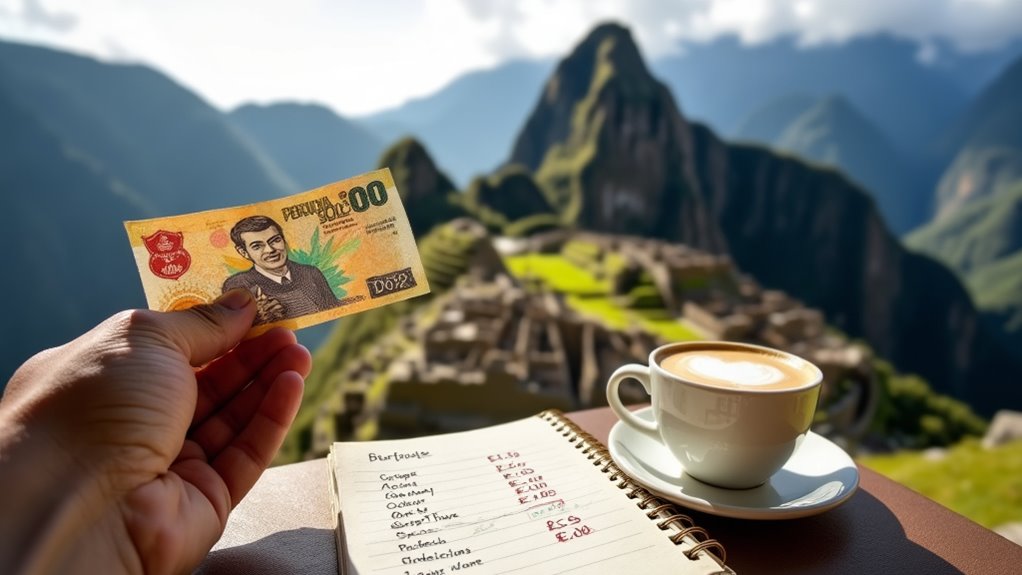
Budget travelers beware: Peru's hidden costs might surprise you, but strategic planning unlocks exceptional value in this South American gem.
Peru offers good value compared to many South American destinations, with typical visitor costs around $2,172. You’ll spend about $700 on flights, $500 for accommodation, and $1,000 for tours during a two-week trip. Prices vary seasonally—save up to 30% during rainy months while enjoying better deals on everything from hostels ($8-15/night) to meals ($30 for a nice dinner for two). Discover how to maximize your experience while keeping your budget intact.
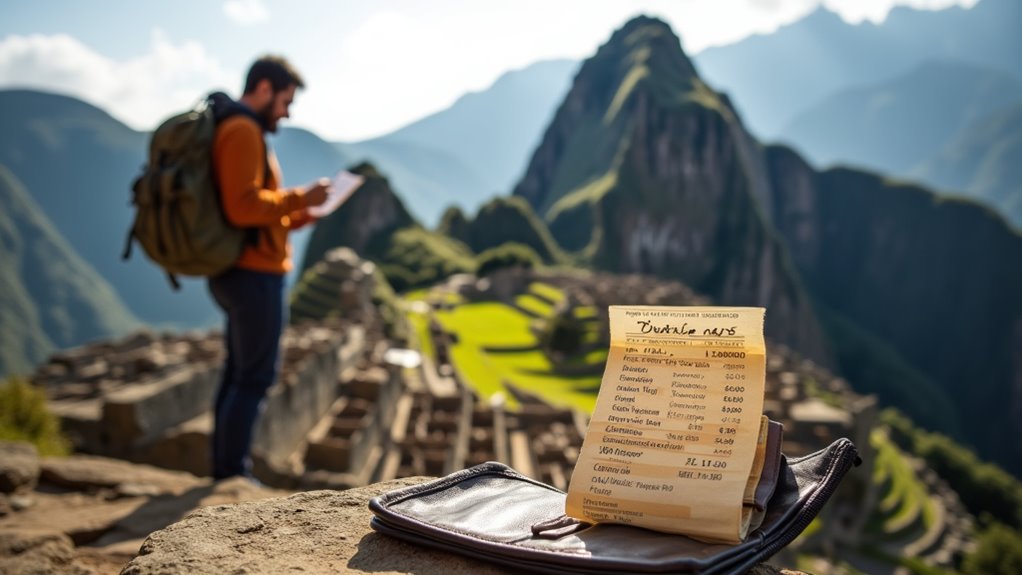
While Peru remains one of South America’s most affordable destinations, the spending landscape has changed markedly since the pandemic. You’ll now spend about $2,172 as an international visitor, down from the pre-pandemic peak of $4,700 in 2019.
Your daily budget varies considerably based on your travel style. Budget travelers can manage on $30-$35 daily, while mid-range experiences cost $40-$100. If you’re seeking luxury, expect to spend over $100 per day.
For a typical two-week trip, you’ll need around $700 for flights from major US cities, $500 for accommodations, $1,000 for tours, $300 for intercity travel, and $400 for meals.
Peru’s costs remain competitive with neighbors like Chile ($2,450/visitor) and Colombia ($2,120/visitor). These three countries form the core of South American tourism, with Peru attracting 5.28 million visitors in its peak year of 2019.
When selecting accommodation in Peru, you’ll find options to match every budget and travel style. Hostels offer dormitory beds for $8-15 per night, with private rooms in guesthouses ranging from $15-30, often including Wi-Fi and kitchen access.
Mid-range hotels cost around $70-80 per night in Lima, providing private bathrooms, breakfast, and enhanced security. Expect 10-20% price increases during festivals and peak seasons.
For luxury experiences, prepare to spend $150-400+ nightly for premium amenities like spas, gourmet restaurants, and personalized concierge services. According to Trivago data, hotel prices in Lima have shown seasonal fluctuations from September 2021 through February 2024.
Airbnb presents another option, with rooms starting at $20 and entire apartments at $100+, though cleaning fees add 10-20% to listed prices.
Remember that Lima’s hotel prices have averaged $74 nightly in early 2024, with seasonal fluctuations.
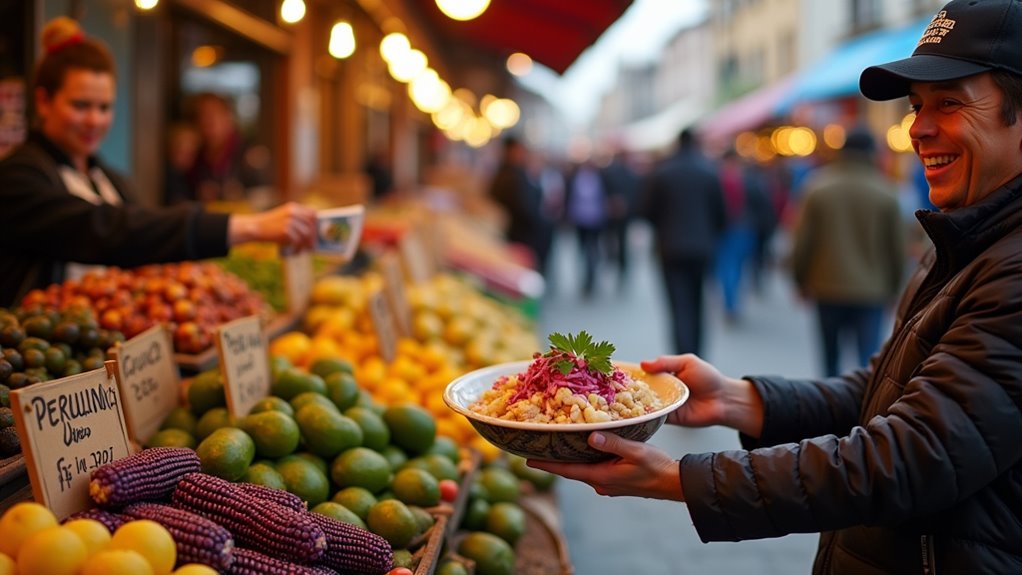
Beyond securing comfortable accommodation, your Peru budget must account for daily food expenses. Recent data shows food inflation at 0.97% as of April 2025, significantly lower than the historical average of 6.01% since 1993.
Your dining options span from affordable street food to high-end restaurants. For budget travelers, local markets and street vendors offer traditional dishes at the lowest prices. This positive trend follows a dramatic decrease from 13.07% peak inflation in May 2023 to current near-zero levels.
Mid-range restaurants charge around S/.120 (about $30) for a three-course meal for two, while fast food combos cost approximately S/.22.
If you’re splurging in Lima, expect to pay S/.200-400 ($50-100) per person at upscale establishments.
For casual dining, domestic beers average S/.8.
Economic conditions and exchange rates may affect these prices, but food inflation is predicted to remain stable at around 2%.
As you plan your Peruvian adventure, transportation costs will form a significant portion of your travel budget. Buses offer the most economical option for long-distance travel, ranging from $10-$50 depending on distance and comfort level.
For the iconic Cusco to Machu Picchu route, trains cost approximately $70 one-way, with luxury options reaching $200. Book these journeys in advance for better rates.
Within cities, you’ll find affordable options including taxis ($1-$5 for short trips), the Lima metro ($0.80 per ride), and local buses.
Rural areas have fewer options and may require pricier transportation.
Consider your comfort preferences when budgeting—basic services cost less but luxury options provide better amenities.
Transportation expenses also vary seasonally, with prices typically higher during peak tourist periods. Domestic flights from Lima to Cusco generally cost around $125, making air travel a practical option for longer distances.
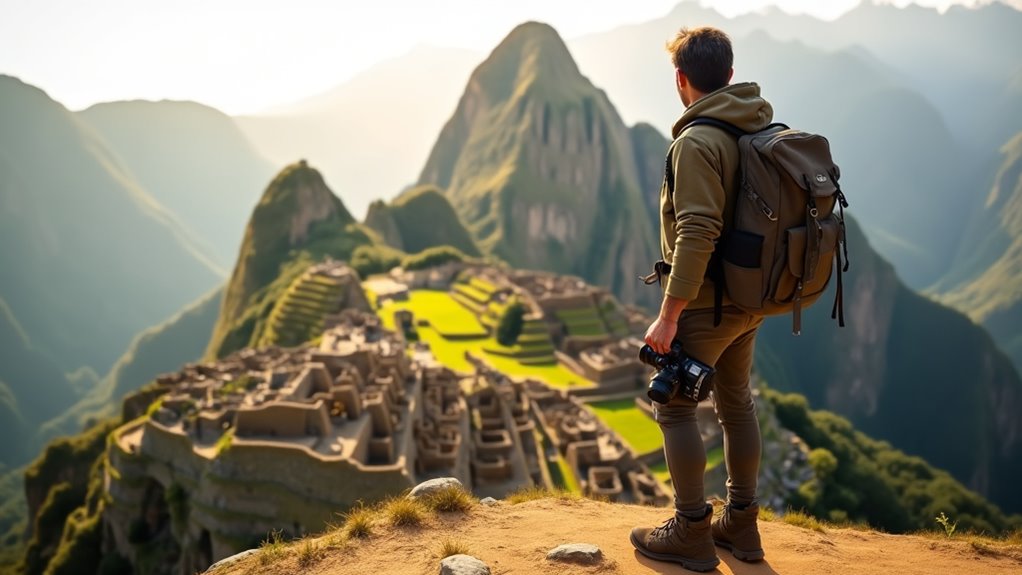
No visit to Peru is complete without experiencing Machu Picchu, but you’ll need to prepare for the associated costs. In 2025, expect to pay 152 soles (USD 45) for general admission as a foreigner, while students with valid ID pay 77 soles (USD 23).
You’ll have ticket options: the standard Circuit 2 covers main areas, while premium tickets include Huayna Picchu or Machu Picchu Mountain access. Tickets must be purchased in advance due to visitor caps.
Beyond Machu Picchu, Sacred Valley sites cost between 20-70 soles (USD 6-21) per location. Consider multi-site passes for savings.
Don’t forget additional expenses like guides (USD 40+ per group), transportation, and meals when budgeting. Book official tickets starting December 19, 2024, to avoid scams. The new circuit system divides visitors into 10 sub-circuits during high season, allowing for a maximum capacity of 5,600 visitors daily.
Planning a 7-day Peru trip requires careful budgeting to maximize your experience without breaking the bank. For a week-long adventure, you’ll need to account for accommodations, transportation, meals, and activities.
Your biggest expenses will likely be Machu Picchu tours ($400-800 for multi-day options) and accommodations. Save by eating street food, using public transportation, and booking activities in advance. For travelers on a tight budget, consider utilizing free accommodation options like Couchsurfing or volunteering through WorldPackers.
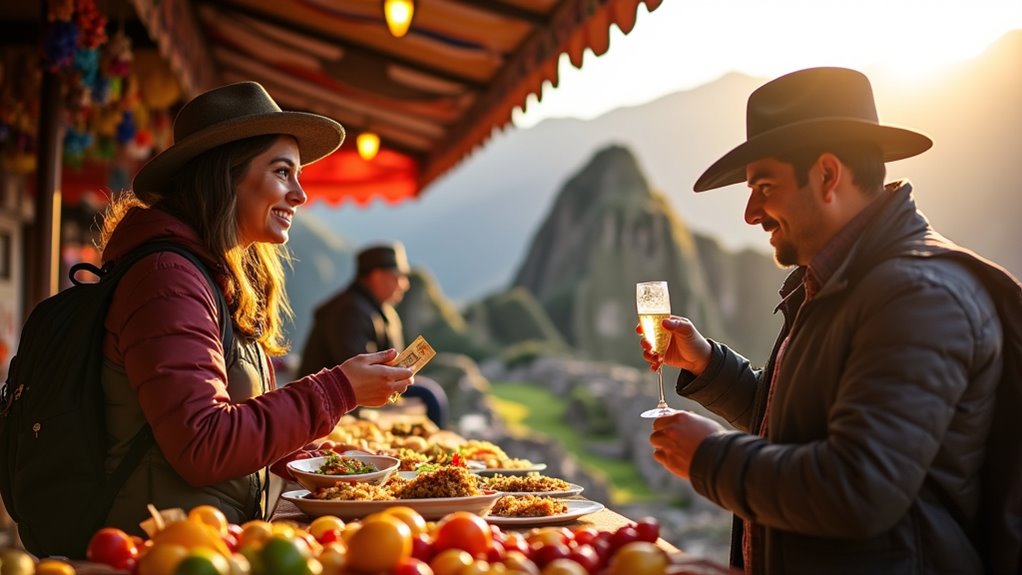
Peru offers dramatically different travel experiences depending on your budget, with each approach having distinct advantages.
In luxury travel, you’ll enjoy high-end hotels like Inkaterra Machu Picchu Pueblo with fine dining and private guides.
Meanwhile, budget travelers stay in hostels and eat at local markets.
Transportation presents similar contrasts—luxury travelers use private transport while budget travelers navigate public buses and colectivos.
Your dining options range from exclusive restaurants to affordable market meals.
For activities, luxury packages include private tours to exclusive sites, while budget options feature group excursions. A family of four spent approximately $670 total for their day trip to Machu Picchu, including train tickets purchased directly from Peru Rail’s official site.
The value proposition is clear: luxury trips deliver exceptional service and exclusive experiences at premium prices, while budget travel allows you to experience Peru’s wonders at a fraction of the cost, potentially funding multiple adventures.
When deciding the best time to visit Peru, understanding seasonal price patterns can save you hundreds of dollars on your trip. June to August marks peak season with inflated accommodation and flight prices, while December through February offers significant savings except for coastal areas during Christmas. Traveling during the rainy months can reduce costs on accommodation and transportation by up to 30% off normal rates.
The good news? Attraction costs like Machu Picchu tickets remain relatively stable year-round.
For maximum savings, consider local transportation options and eating at neighborhood restaurants rather than tourist establishments.
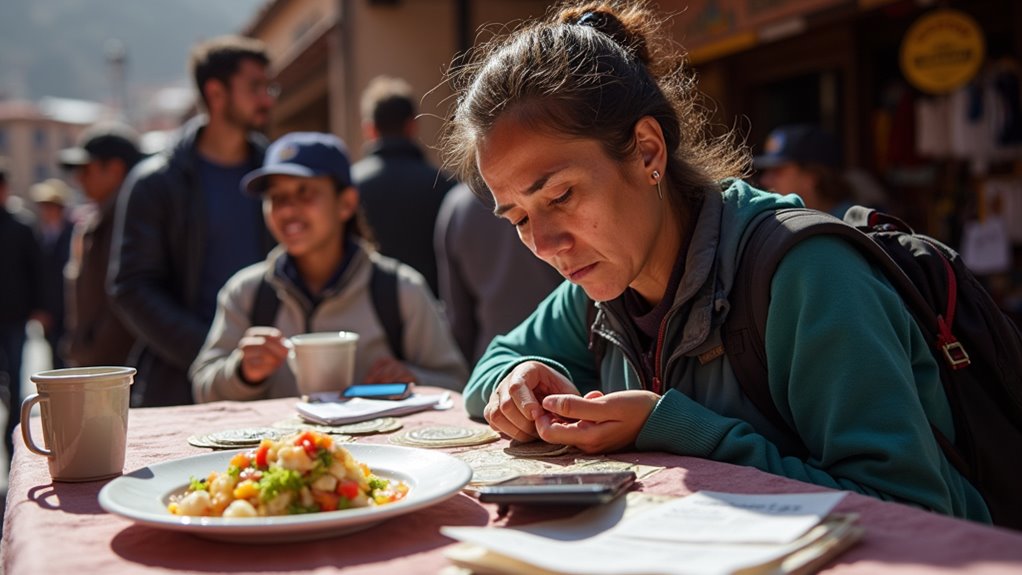
Traveling through Peru can reveal numerous hidden costs that quickly inflate your carefully planned budget if you’re not vigilant. Beyond obvious expenses like flights and hotels, you’ll encounter fees for domestic transportation, with internal flights costing around $38 and scenic train rides to Machu Picchu commanding premium prices.
Accommodation surprises include extra charges for Wi-Fi, breakfast, early check-out, and strict cancellation policies. Don’t overlook activity expenses either—Machu Picchu entry fees require advance booking, and guides, special permits, and transportation to attractions add up rapidly. Emergency funds of $500-$1000 are recommended to cover any unexpected situations during your journey.
Remember to budget for often-forgotten extras like travel insurance, visa fees, vaccinations, and ATM withdrawal charges. Local tipping customs and taxes can further strain your wallet, especially in tourist areas where restaurant prices considerably exceed those in local establishments.
Despite its reputation as a relatively affordable South American destination, Peru still demands savvy budgeting if you’re planning to explore its diverse landscapes and archaeological wonders. With careful planning, you can notably reduce costs while maximizing experiences.
For activities, consider free walking tours and independent exploration rather than expensive guided experiences. Traveling during off-peak seasons like January through April can also significantly reduce your overall expenses while avoiding crowds at popular attractions.
Peru won’t break your bank if you plan carefully. With hostels averaging just $10-15 per night and delicious local meals for $3-5, you’ll find it’s 40% cheaper than traveling in Western Europe. Track your expenses, use public transportation, and eat where locals do. Remember, the most memorable experiences—like watching sunrise over the Andes—are often the ones that cost you nothing at all.